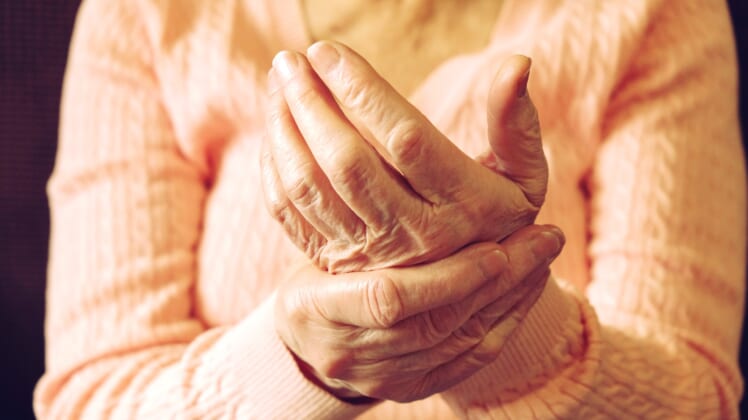
A little ache every now and then might seem normal, especially as you get older. But if you’re feeling joint pain day in and day out, it might be something more. Many people are living with arthritis every day. Fortunately, there are things you can do to reduce your pain.
Know loved ones with arthritis or have it yourself? You’re part of a rising group that does—54 million Americans to be exact (Centers for Disease Control and Prevention).
The CDC confirms how this debilitating condition can and does limit working age adults. Many can’t work at all and do little to manage their arthritis.
Since the number of people with arthritis is likely to keep rising, it’s an issue that doctors and patients can no longer ignore.
Signs and Symptoms
According to the Arthritis Foundation, arthritis doesn’t really refer to a single condition. Instead, it’s a broad term that consists of more than 100 separate conditions.
The common theme among all of them, though, is that sufferers have mild to severe joint pain.
A few symptoms that alert patients to a problem:
- pain in the joints
- stiffness, especially after long periods of rest
- limited motion
- swelling
What causes this painful inflammation? The answer depends on which kind of arthritis you’re experiencing.
For many, arthritis occurs because of cartilage wearing down in the joints, causing the bones to touch or grind together. Others experience joint pain because of an immune response to the lining that surrounds the joints.
Either can prove limiting and painful, especially if the arthritis worsens over time.
You may want to pay attention to these symptoms if you have family members with arthritis or if you’re a woman. Obesity and joint injuries are also risk factors.
According to the Mayo Clinic, those who have had a previous joint injury because of sports will boost their chances for arthritis too.
It makes sense. Sports can be hard on the joints, and an injury might wear down their cushioning cartilage more quickly.
Types of Arthritis
You probably don’t want to learn about the symptoms and causes for every type of arthritis out there. But there are a few types that are common in America.
The Mayo Clinic states that the most common is osteoarthritis, the kind that happens as cartilage wears down in joints. Rheumatoid arthritis is also common: it occurs due to the immune response.
Other types of arthritis include:
- Fibromyalgia: This one is a type of arthritis that affects the whole body and can either stay with a person daily or come and go.
- Gout: Gout happens when uric acid builds up in the blood. It can then form little crystals in the joints, causing them to flare up with pain.
- Psoriatic Arthritis: This type is caused by the condition psoriasis, which affects joints and tissues in the body as well as the skin.
- Lupus: Lupus is another form of arthritis caused by an immune system response in the body. It can affect many parts, including the joints.
What to Do If You Have Arthritis
Discovering that you have arthritis can be difficult—and understandably so. You want to maintain your quality of life and continue doing the activities you enjoy.
While your treatment will depend on the type and severity of your pain, the Mayo Clinic lists several treatment options, including:
Physical therapy
If your symptoms are moderate, physical therapy could do you good. The exercise will help to keep joints from stiffening up and worsening the pain.
Plus, professional guidance can keep therapy targeted to your needs, making the exercises more effective.
Medication
Certain medications can improve your symptoms and/or the inflammation. Your doctor may start with nonsteroidal anti-inflammatory drugs (NSAIDS) to lessen inflammation.
For rheumatoid arthritis, you may need an antirheumatic drug. This medication will inhibit your immune system from attacking your joints.
Your doctor may recommend other prescription and non-prescription drugs as well.
Surgery
For more severe arthritis, you may need surgery. In most cases, this will mean either surgery to repair damaged joints or to replace them with artificial ones.
Taking Care of Matters at Home
You should certainly get medical treatment for arthritis pain early on. However, the Arthritis Foundation also gives the following suggestions for making life easier at home.
Always consult your doctor about whether these suggestions are best in your case:
- Get regular exercise throughout the day to loosen the joints.
- Focus on muscle-strengthening exercises around affected joints.
- Try hot and cold packs or patches.
- Keep a healthy weight.
Arthritis affects millions of people in America every day. While you may find yourself somewhat limited by the condition, effective treatment and management at home can do wonders. Stay aware of abnormal joint pain early and be open about your needs to your doctor and loved ones.
